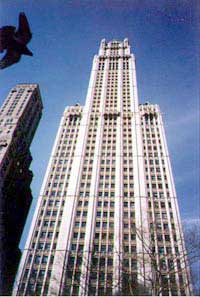
38. From the Countryside to the City

The Age of Industry brought tremendous change to America. Perhaps the single greatest impact of industrialization on the growing nation was urbanization. Thomas Jefferson had once idealized America as a land of small, independent farmers who became educated enough to participate in a republic. That notion was forever a part of history.
As large farms and improved technology displaced the small farmer, a new demand grew for labor in the American economy. Factories spread rapidly across the nation, but they did not spread evenly. Most were concentrated in urban areas, particularly in the Northeast, around the Great Lakes, and on the West Coast. And so the American workforce began to migrate from the countryside to the city.
The speed with which American cities expanded was shocking. About 1/6 of the American population lived in urban areas in 1860. Urban was defined as population centers consisting of at least 8000 people, only a modest-sized town by modern standards. By 1900 that ratio grew to a third. In just 40 years the urban population increased four times, while the rural population doubled. In 1900, an American was twenty times more likely to move from the farm to the city than vice-versa. The 1920 census declared that for the first time, a majority of Americans lived in the city.
The Best and Worst of American Life

These new cities represented both the best and the worst of American life. Never before in American history had such a large number of Americans lived so close to each other. The ease with which these people could share ideas was never greater. Although these cities produced many products, they were also a huge market. Now, in one small area, citizens could enjoy better and cheaper products. Technology created possibilities as the skyscraper changed the skyline, and electric cars and trolleys decreased commuting time. The light bulb and the telephone transformed every home and business.
There was also a darker side. Beneath the magnificent skylines lay slums of abject poverty. Immigrant neighborhoods struggled to realize the American dream. Overcrowding, disease, and crime plagued many urban communities. Pollution and sewage plagued the new metropolitan centers. Corruption in local leadership often blocked needed improvements.
American values were changing as a result. Urban dwellers sought new faiths to cope with new realities. Relations between men and women, and between adults and children also changed. As the 20th century approached, American ways of life were not necessarily better or worse than before. But they surely were different.





